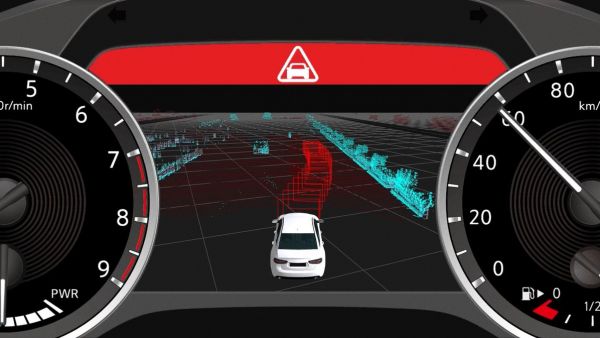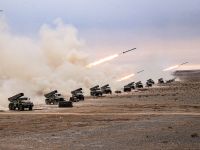Nissan’s New Driver-assistance Technology Dramatically Enhances Collision Avoidance

Nissan this week announced the development of a new driver-assistance technology that utilizes highly accurate, real-time information about the vehicle’s surrounding environment to dramatically enhance collision avoidance. At a Nissan facility, a test vehicle was used to demonstrate how this technology can automatically perform collision-avoidance maneuvers.
Nissan’s “ground truth perception” technology fuses information from next-generation high-performance LIDAR, radar and cameras. The technology detects the shape and distance of objects, as well as the structure of the area surrounding the vehicle, in real time with a high degree of accuracy. Utilizing this information, the vehicle instantly analyzes the current situation, judges, and automatically performs required collision-avoidance operations. This technology can also detect slowed traffic and road obstacles in the distance and execute lane changes accordingly. Importantly, the technology can also provide increased support to drivers in areas where detailed map information is not available.
Takao Asami, senior vice president, leading global research and development, says: "Nissan has been the first to market a number of advanced driver assistance technologies. When we look at the future of autonomous driving, we believe that it is of utmost importance for owners to feel highly confident in the safety of their vehicle. We are certain that our in-development ground truth perception technology will make a significant contribution to owner confidence, reduced traffic accidents and autonomous driving in the future.”
Nissan has partnered with cutting-edge companies to research and develop this technology and share know-how. The next-generation LIDAR, a crucial element, is being integrated into Nissan’s system in collaboration with Luminar, utilizing world-leading technologies. In the area of advanced collision avoidance control it is critical to develop highly accurate verification technology in a digital environment. To this end Nissan is teaming up with Applied Intuition, which has state-of-the-art simulation technology.
Under its long-term vision, Nissan Ambition 2030, Nissan is working to develop vehicle control technology aimed to significantly reduce accidents by utilizing next-generation LIDAR technology. Nissan believes that in the upcoming era of autonomous driving, driver-assistance technology that can avoid highly complex accidents will be essential. Nissan aims to complete the development of its ground truth perception technology by the mid-2020s. It will first be available on select new models, and on virtually every new model by fiscal year 2030.
Background Information
Nissan Middle East
Nissan’s heritage in the Middle East goes way back to 1957, when the first Nissan vehicle was sold in Saudi Arabia. Since then the Nissan Legacy has taken deep roots in the hearts of the Middle East people by becoming an integral part of their lives.
Currently Nissan is one of the most popular and successful automobile brands in the Middle East boasting of a strong line-up ranging from popular passenger cars to powerful 4x4 series and commercial vehicles.
In its quest to closely understand the local needs of its customers, Nissan Motor Co. Ltd. in June, 1994 set up a regional Middle East head quarters in Dubai, thus becoming the first Japanese car manufacturer to accomplish this feat. The Nissan Middle East FZE office houses a highly sophisticated training center which serves as an excellent training ground for undertaking Nissan customer care and service activities.






